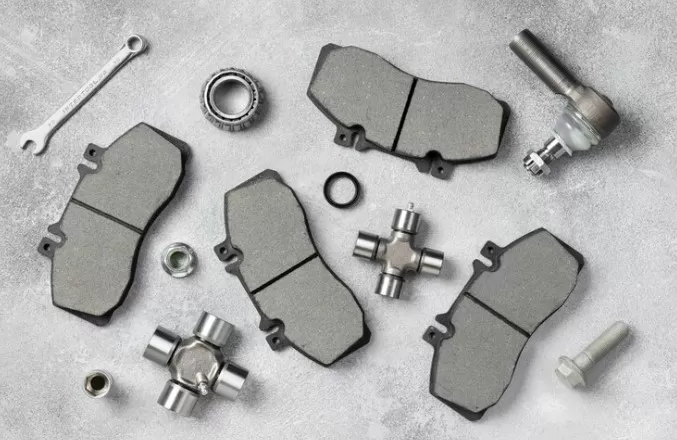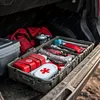
The Subaru Sambar, a versatile microvan and light truck, is a beloved vehicle in Japan and among enthusiasts worldwide. Its compact size, practicality, and reliability make it an excellent choice for both personal and business use. However, like any vehicle, the Subaru Sambar is not without its issues. While the Sambar’s reputation for durability is well-deserved, certain parts can wear out or fail over time, especially if the vehicle is older or has seen a significant amount of use. In this article, we will explore six common problems with Subaru Sambar parts and provide solutions on how to fix them.
1. Engine Misfires and Poor Performance
One of the most common problems owners of Subaru Sambar vehicles experience is engine misfires, which can lead to a noticeable loss of power, poor fuel economy, and an overall rough driving experience. Engine misfires often stem from issues with the ignition system or fuel delivery components.
Common Causes:
Faulty Spark Plugs: Over time, spark plugs can wear out, leading to poor ignition and misfires.
Worn Spark Plug Wires: If the spark plug wires become cracked or damaged, they can cause inconsistent ignition.
Dirty Fuel Injectors: When fuel injectors become clogged or dirty, they fail to deliver the right amount of fuel to the engine, causing misfires.
Weak Ignition Coil: A malfunctioning ignition coil can prevent the spark plugs from firing properly, leading to engine misfires.
How to Fix:
Replace Spark Plugs: Inspect the spark plugs and replace them if necessary. Use OEM Subaru Sambar parts for a perfect fit and performance.
Inspect and Replace Spark Plug Wires: Check for any visible cracks or damage to the wires. If they are worn, replace them with high-quality replacements.
Clean or Replace Fuel Injectors: Fuel injector cleaning can help restore proper function, but if the injectors are severely clogged, consider replacing them.
Check the Ignition Coil: Use a multimeter to check the resistance of the ignition coil. If it's out of spec, replace the ignition coil.
2. Transmission Issues
Another common problem that Subaru Sambar owners face is transmission-related issues. These can range from difficulty shifting gears to complete transmission failure. The issue may stem from a variety of factors, including worn transmission parts, low transmission fluid, or issues with the clutch (in manual transmission models).
Common Causes:
Low Transmission Fluid: Insufficient transmission fluid can cause the transmission to slip, overheat, or become difficult to shift.
Worn Clutch: In manual transmission models, a worn or damaged clutch can make shifting gears difficult.
Faulty Synchronizers: Transmission synchronizers help match the speed of the engine and transmission shafts, making shifting smoother. Worn synchronizers can lead to grinding noises or difficulty engaging gears.
How to Fix:
Check and Top Up Transmission Fluid: Ensure that the transmission fluid level is sufficient. If the fluid is dirty or low, flush the transmission and refill with the correct type of fluid recommended for the Subaru Sambar.
Replace the Clutch: If the clutch is slipping or causing difficulty shifting, it may be time to replace it. A full clutch replacement may involve replacing the clutch disc, pressure plate, and release bearing.
Inspect and Replace Synchronizers: If the issue is with the transmission synchronizers, you may need to have the transmission disassembled and have the faulty parts replaced by a professional mechanic.
3. Suspension Wear and Tear
The suspension system in the Subaru Sambar plays a crucial role in providing a smooth and comfortable ride. Over time, however, suspension components can wear out due to age, mileage, and driving conditions. Worn suspension parts can result in a rough ride, excessive body roll, and poor handling.
Common Causes:
Worn Shock Absorbers: Shock absorbers help to dampen the vehicle's movement when going over bumps or rough terrain. Worn shocks can cause the vehicle to bounce excessively.
Damaged Suspension Bushings: The suspension system relies on rubber bushings to absorb vibrations and maintain proper alignment. These bushings can wear out or become damaged, leading to clunking noises or poor handling.
Worn Out Ball Joints: Ball joints allow the suspension to move freely while maintaining stability. If they wear out, the vehicle may develop poor handling, noise, or instability.
How to Fix:
Replace Shock Absorbers: If the shocks are worn or leaking, replace them with new ones. Be sure to use high-quality parts designed for the Subaru Sambar to ensure proper fitment and performance.
Replace Suspension Bushings: Inspect all suspension bushings and replace any that are cracked or damaged. Using OEM Subaru Sambar parts will ensure proper fitment and longevity.
Inspect and Replace Ball Joints: If the ball joints are worn, they should be replaced as soon as possible. A mechanic can inspect these parts and replace them with the appropriate parts.
4. Electrical System Failures
Electrical issues can be frustrating, and the Subaru Sambar is not immune to them. Common electrical problems include faulty alternators, dead batteries, and issues with fuses or wiring. These issues can lead to starting problems, erratic dashboard lights, or complete electrical failure.
Common Causes:
Failed Alternator: The alternator charges the battery while the engine is running. If it fails, the battery may not charge properly, leading to starting issues.
Dead Battery: Over time, batteries lose their ability to hold a charge and will eventually need replacement.
Blown Fuses: A blown fuse can cause certain electrical systems or lights to stop working.
How to Fix:
Test and Replace the Alternator: If the alternator is not charging the battery, use a multimeter to test it. If the alternator is faulty, replace it with a new one to restore proper charging functionality.
Replace the Battery: If the battery is old or no longer holds a charge, replace it with a new, high-quality battery.
Check and Replace Fuses: Inspect the fuse box for blown fuses and replace them with the correct fuse type. This is usually a simple and inexpensive fix.
5. Overheating and Cooling System Problems
Engine overheating can be a major issue, especially if the cooling system is not functioning properly. Subaru Sambar owners often experience cooling system failures that can lead to engine damage if not addressed promptly.
Common Causes:
Low Coolant Level: If the coolant level is too low, the engine can overheat because it lacks proper cooling.
Leaking Radiator: A radiator leak can cause coolant to escape, leading to overheating.
Faulty Thermostat: The thermostat controls the flow of coolant through the engine. A stuck or faulty thermostat can prevent the engine from cooling properly.
Worn Water Pump: The water pump circulates coolant throughout the engine. A malfunctioning water pump can cause coolant flow problems and lead to overheating.
How to Fix:
Check Coolant Levels: Regularly check the coolant level and top it up if necessary. Use the correct type of coolant for the Subaru Sambar.
Inspect and Replace the Radiator: If the radiator is leaking or damaged, it may need to be replaced. You can either repair the radiator if possible or replace it with a new one.
Replace the Thermostat: If the thermostat is stuck, replace it with a new one to ensure proper coolant flow.
Replace the Water Pump: If the water pump is worn out, it will need to be replaced. Be sure to use an OEM water pump for the Subaru Sambar to ensure optimal performance.
6. Rust and Corrosion on Body Parts
Rust and corrosion are common problems with older Subaru Sambar vehicles, especially in regions with harsh winters or high humidity. The body and chassis of the vehicle are prone to rusting, particularly around the wheel wells, undercarriage, and door frames.
Common Causes:
Exposure to Salt and Moisture: Vehicles driven in areas where roads are salted in winter or exposed to high moisture levels are more susceptible to rust.
Lack of Regular Maintenance: Failing to clean and protect the undercarriage of the vehicle can accelerate rust formation.
How to Fix:
Inspect and Treat Rust: Regularly inspect the vehicle for signs of rust. If you spot rust, treat it as soon as possible to prevent it from spreading. Use rust remover or a rust converter and apply a protective coating.
Repair or Replace Corroded Parts: If rust damage is extensive, it may be necessary to replace corroded body panels or parts. Depending on the severity, you may need to take the vehicle to a body shop for professional repairs.
Conclusion
The Subaru Sambar is a reliable and durable vehicle that, with proper care and maintenance, can last for many years. However, like any vehicle, it is prone to certain common issues, particularly as it ages. By staying on top of these problems and addressing them promptly, you can keep your Subaru Sambar running smoothly for years to come.
When dealing with Subaru Sambar parts, it's always a good idea to use high-quality OEM parts to ensure proper fit and performance. If you're unsure about the problem or lack the skills to perform repairs, consulting a professional mechanic is recommended.
With attention to maintenance and timely repairs, your Subaru Sambar will continue to serve you well, whether you use it for daily commuting, business, or weekend adventures.













